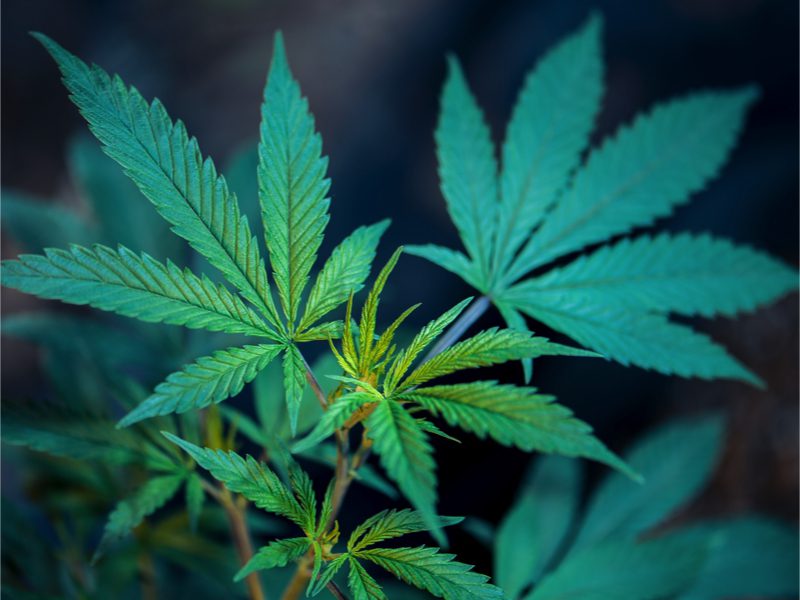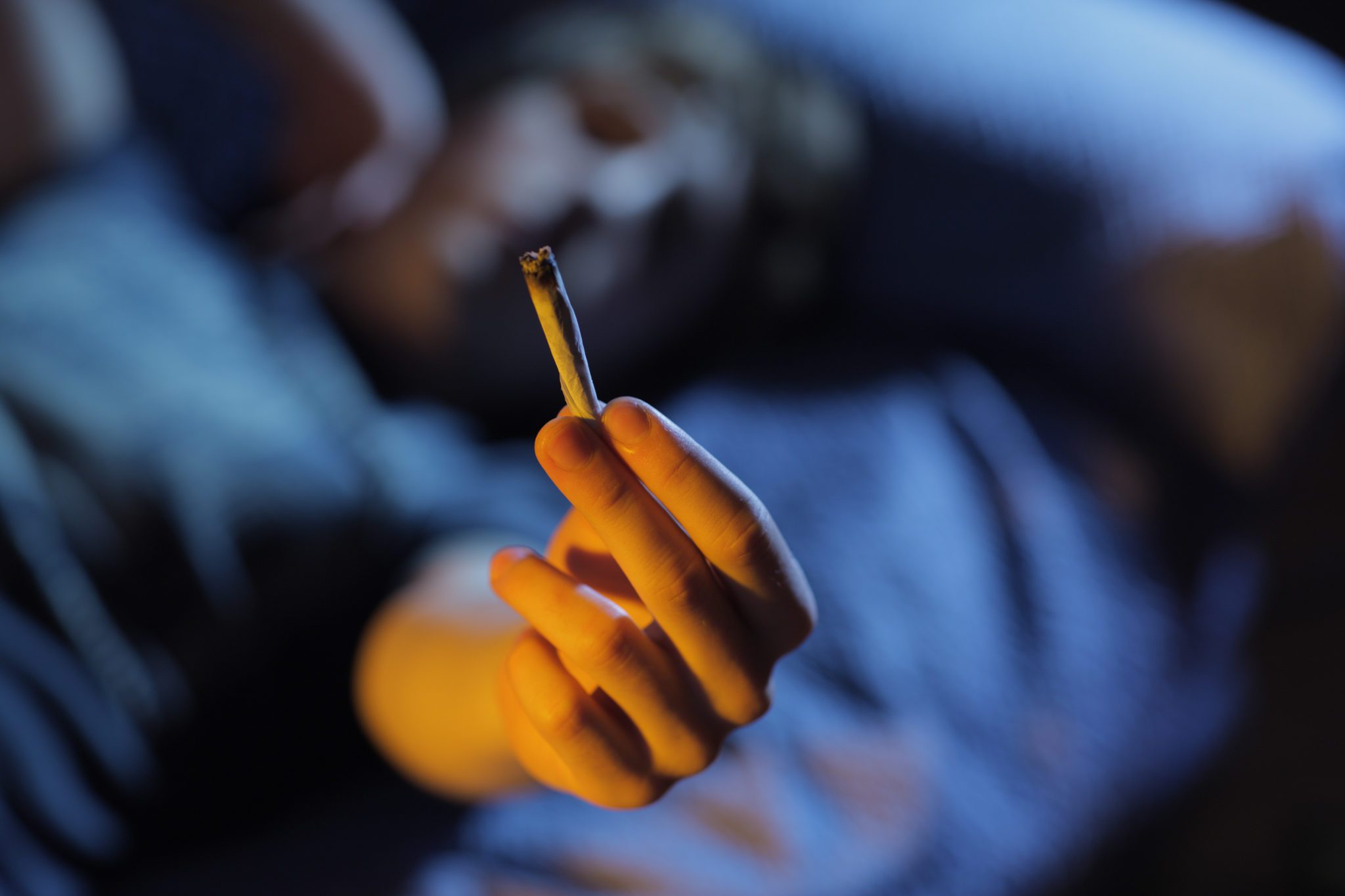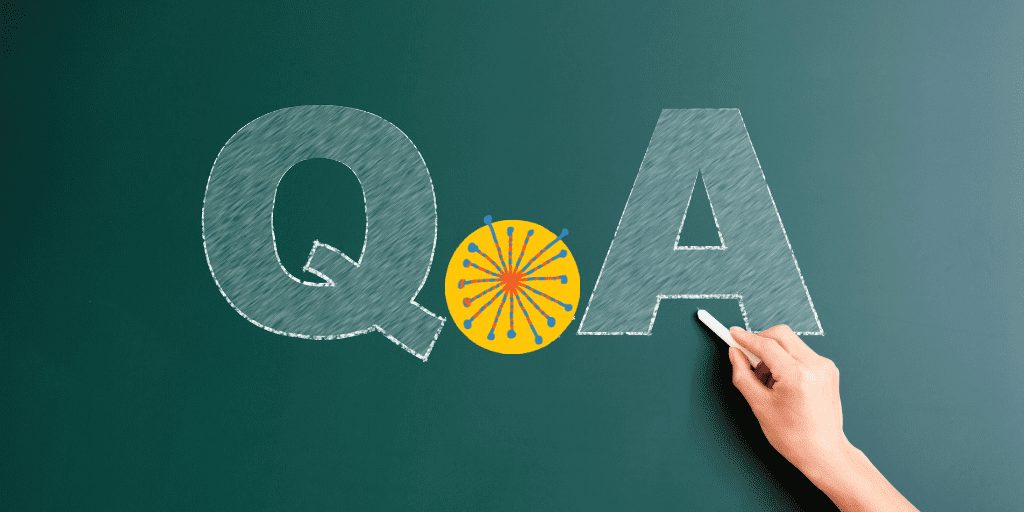Marijuana: Facts, Myths, and Ben’s Story

Posted in: Hot Topics, Teenagers
Topics: Addiction & Substance Misuse
Many parents and teens wonder about the safety of using marijuana. While much is known about this substance, there is still considerable controversy about its potential harm to teenagers.
Learn more about cannabis and the teen brain. Tune in above, or find us wherever you stream.
Let’s take a look at Ben’s story. Ben is a somewhat typical teenager:
Ben is a 17-year-old high school senior with good grades, good friends and plenty of extracurricular activities. He tried marijuana for the first time at a party when he was 15 years old. Initially, he used only at sports games or parties; after all, everyone seemed to be using marijuana, and he didn’t feel it was as “bad” as alcohol or hard drugs. It helped him relax and socialize, especially with girls. With time, however, he begins to smoke on weekdays when he feels stressed out by schoolwork or his parents. At some point, Ben starts to wonder if there is a problem with his increasing use of cannabis.
You’ll notice that Ben’s story of marijuana use begins with experimentation and social use. He does, however, begin to notice that it relieves his symptoms of stress and anxiety. In order to understand Ben and when marijuana becomes harmful, it might be helpful to begin with some basics:
What Is Marijuana?
Marijuana leaves come from a plant, the active ingredient of which, delta-9-tetrahydrocannabinol (or THC), is responsible for the drug’s “psychoactive,” mind-altering effects. On average, most marijuana today contains up to 15% THC. This is 10-15 times higher than the THC content in the 1970s, and may explain why some parents have been less affected than younger users today.
Marijuana has many street names, including weed, bud, spliffs, pot, or the name of the strain of the plant. In contrast, synthetic marijuana, also known as K-2 and spice, may look similar, but the herbs are treated with chemicals containing cannabinoid molecules. While gaining in popularity, its fatal outcomes and paranoia are felt to be due to unknown quantities, as well as the overall “quality” of synthetic cannabinoid.
Because there many ways to use marijuana, it can make it harder for parents to watch for use in their kids. Crushed marijuana leaves are often paper-rolled into cigarettes to create “blunts,” or used in “bongs” or water pipes for a quicker, sometimes more potent high. Increasingly common among adolescents is the vaping of marijuana. And today, with recreational marijuana legalized in many states, even more consumption options are readily available, including eating edibles and drinking beverages with marijuana products, which can .
How Common Is Marijuana Use?
Marijuana is the #1 illicit drug used by adolescents and young adults in the US. This is not hard to believe given the ease in accessing marijuana, and the general attitudes about its use. The adolescent perception that marijuana is not harmful is felt to be the primary reason we have seen a steady increase in its use by middle and high school students since 2007. Today, around 1 in 4 students in grades 11 or 12 report having used marijuana in the past 30 days, and 1 in 10 college students report using it almost every day.
Most kids who experiment with marijuana don’t move on to other harder drugs. That is the good news about teen experimentation. However, there are some people who are more vulnerable, using marijuana as a “gateway” into other substances and eventual addiction. This doesn’t mean that marijuana is a gateway drug for everyone (a common misperception), but it does mean that there are a percentage of kids who move from marijuana to more dangerous substances.
There are, in fact, a number of factors that may lead to addiction. We now know that the earlier a young and still-developing brain begins experiencing marijuana (and the same goes for nicotine and alcohol), the more likely it is that the very same brain will become addicted. Additionally, some research suggests that teens under the age of 16 who used marijuana heavily (5 out of the last 7 days, or a minimum of 3,000 joints in their lifetime) had a drop in IQ of 8 points, even after quitting the drug’s use. This means that an adolescent could go from possessing average intelligence, to newly-measured, borderline-low intelligence. Furthermore, frequent users may be impacted in other ways, including harm to brain health and difficulties with memory, attention and organization; impaired driving; and even mental health issues including anxiety or depression.
Medical Marijuana
With marijuana fully legal in 24 states (and counting), coupled with the benefits of medical marijuana, contribute to a misperception of marijuana’s risks. For many kids and adults, the message is confusing. When is marijuana an illegal drug, and when is it considered medicine? Medical marijuana advocates believe that those with severe nausea and pain due to terminal illnesses like cancer and HIV should be able to use it for medicinal purposes. Others have argued for its additional benefits for glaucoma, insomnia and anxiety. However, many doctors worry about marijuana’s harmful and addictive effects in young developing brains. Part of the problem may be that the studies of its use and effectiveness for illnesses have been conducted only on adult subjects. As noted above, teenagers may be a very different population with different risks.
Common Questions Teens Ask
About 75% of teenagers will experiment with alcohol and marijuana in high school, many of whom will ask, “Why was it OK for my parents to use marijuana and not me?” They may also muse, “Marijuana is not addictive like alcohol, so how can it be dangerous?” “How can something be bad when it helps me focus and relax?”
The national conversation about the possible risks or benefits of marijuana use offers an ideal opportunity to understand fact from fiction. With this information, we can begin a thoughtful dialogue with our kids about the myths, medical uses and potential risks involved in marijuana use.
What Happened to Ben?
Let’s go back to Ben, who has now become a regular user of marijuana.
After a few months, Ben notices that smoking marijuana helps him sleep at night. Unfortunately, Ben begins to wake up late some mornings, missing school and concerning his school counselor and parents. He tells them that he has “senioritis.” When asked about drug use he is vague, but admits to occasional marijuana. At the urging of Ben’s school counselor, he sees a substance abuse counselor.
Ben’s parents are surprised by what they learn. While the majority of teens (over 90%) do not develop marijuana abuse or dependence, the greatest risk for problematic use is between the ages of 14 to 20. Unlike most of his peers, Ben’s counselor is worried how marijuana is affecting his functioning: he’s not going to school, and is fighting with his family. Also, he has now been using regularly for about two years, and the counselor worries that the marijuana may be affecting his mood and causing irritability. She therefore recommends therapy and weekly urine toxicology screens, cautioning that these tests can come back positive for marijuana for up to 6 weeks.
After weekly therapy begins, Ben seems to be on track again with school, and generally better at home. With a month of sobriety, Ben decides to stop seeing his therapist—his parents, reluctantly, agree. However, a few weeks later, Ben complains that he can’t focus, and is no longer interested in studying or hanging out with friends. He begins to spend most of his time in his room, and decides not to go to college in the fall. Ben’s parents perform a search of his room and car, finding a pouch of marijuana leaves in his car, as well as a bong and more marijuana in his room. Ben admits to using while driving, but says that most of his friends also do so because it helps them concentrate better on the roads. Despite Ben’s resistance, his parents take him to see the counselor again.
Ben’s parents are again astonished at what they learn. The counselor acknowledges that while depression and other diagnoses are common in marijuana users, she thinks Ben may have apathy or “amotivational syndrome,” something that can develop with chronic marijuana use. She is most worried that Ben is driving while high on marijuana, as car accidents related to substance abuse are a leading killer of adolescents and young adults. The counselor refers Ben and his parents to SADD: Students Against Destructive Decisions, and recommends a residential treatment setting for relapse prevention, a psychological assessment for depression, and vigilance against more risky behaviors. She also suggests Motivational Interviewing, a specialized type of therapy that helps one understand how substance use is incompatible with his or her personal goals.
While at the residential facility, Ben reports that he cannot fall asleep without marijuana. He is also irritable, complaining of mood swings and poor concentration. Such symptoms are typical of marijuana withdrawal, which peak immediately after discontinuation of heavy use, but can improve with sobriety. The treatment team explains to Ben and his parents that while marijuana can lead to physical and psychological dependence, the withdrawal symptoms usually subside without the need for medications (unlike alcohol or prescription pain medication abuse). After a few weeks, Ben’s mood improves, and he begins to sleep and concentrate better. He feels back on track, but admits to still having cravings for marijuana. He realizes that he may continue to have psychological dependence on the drug, but agrees to go back to therapy upon leaving the residential treatment program.
Ben is on his way to recovery. With months of sobriety and weekly counseling, he again enjoys his friends, school and life without marijuana. He is sleeping better, and his mood is improved. His friendship circle now consists of others who don’t smoke or use drugs. His parents feel that they can trust him again, and have reinstated his driving privileges. Although Ben feels that he may at times have an urge or craving for marijuana, he is hopeful that the skills learned in the treatment program and therapy will prevent a relapse. He is committed to full sobriety, motivated by his successful sobriety days, and his forthcoming high school graduation.
Warning Signs
For parents reading this blog post, here are some early warning signs that your teen may be experiencing negative effects of marijuana:
- Lack of concentration and coordination
- Low energy or even lethargy
- Lower grades
- Change in friendship circle
- Lost interest in previously-enjoyed activities
- Blood-shot eyes
- Increased appetite
- An odor similar to burnt rope on clothing or breath
- Distorted sense of time
- Forgetfulness
While most teens do not end up like Ben in his story, the worry is that with the higher THC contents in marijuana today, the earlier age of use among teens, and the overall perception that marijuana is not dangerous or addictive, there may be more stories like Ben’s.
It is therefore even more important to have a conversation with teens about the risks of marijuana, and an ongoing dialogue about healthy choices. One site that parents may find useful for reviewing with teens is the National Institute on Drug Abuse (NIDA) website for kids and parents: http://www.teens.drugabuse.gov


 Share
Share Tweet
Tweet





